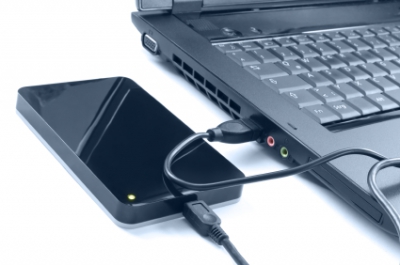Different connection types / Interface
Prevailing interface for connecting external hard drive is USB. Almost every drive has port USB 2.0 that can transfer data at the speed of 480 Mbit. For most cases this speed is enough for users. But for those who feel need for speed there's good news and you are most probably already aware of that. Some modern drives are manufactured with USB 3.0, that is 10 times faster than USB 2.0. It is not hard to find these new drives. But it does make sense because you don’t buy a hard drive for only a year. You hope that it will serve for a long time. In future, USB 2.0 will become outdated so, with this in mind, buy USB 3.0, though you may not have this port in your computer, it will be there in future for sure. Until then you can insert USB 3.0 in port 2.0, no biggie, they are fully compatible though not on ‘hyper’ speeds.
Distance yourself form FireWire drives (technically known as IEEE 1394), since this interface has never been popular. This interface is rarely built-in in PC. ESATA (external SATA) interface is also rare. Some motherboards and laptops are equipped with ESATA interface that helps connecting these external storage devices and yet is rarely built in. And the last interface is Thunderbolt. This new standard was developed by Intel and used for the first time on Apple computers. This interface is not popular and not many peripheral devices use Thunderbolt these days. Thunderbolt can be used for monitors and external hard drives as well. However, this new interface has not bad speed rate: up to 10 Gbit. USB still remains the most popular interface for connecting external hard drives.
Different form factors: 3,5-inch, 2,5-inch and 1.8-inch.
External hard drive comes in 3 different form factors or sizes, if you please. 3,5-inch drives are used in personal computers. They need a separate power supply unit. To connect 3,5-inch drive you will need to carry a power source along. It is heavy and bulky. They are cheaper though.
2,5-inch hard drive form factors are used in laptops. They are small, light and can be easily carried and there is no need in external power supply, you can ‘feed’ it right from USB port. This is the most popular form factor.
And finally, exotic 1,8-inch. This is the smallest available size for external hard drives (size of an iPod). It can easily fit in your jean’s pocket but they are difficult to find and much more expensive as compared to other.
No matter what form factor you have chosen, all of them are supplied with USB cable for connecting it to computer.
Capacity
It’s kids stuff, you just need to decide how much capacity you need. Generally, 500 GB or 1 TB is enough to satisfy the needs.
Less than that is definitely not enough for modern space requirements.
Rotational speed (RPM)
You may have seen 5400 or 7200 PRM in the hard drive specifications. Some manufacturers also use this RPM (revolutions per minute) as a marketing tool. There is no doubt that a drive with 7200 revolutions per minute is faster than the one with 5400 revolutions per minute but you can see it only if the drive is connected inside the computer or via ESATA cable. It is because other interfaces like FireWire and USB are not fast enough to cope with data throughput of drives with 5400 revolutions per minute.
External SSD
SSD is definitely good in terms of speed and performance but price/capacity ratio really amazes. On average 120 GB SSD will cost you around 150 USD, you can buy 4 TB hard disk drive at the same price. So its really up to you to decide.
Other factors
Some other factors include: warranty, software and compatibility with Mac OS. In the majority of cases you can easily find hard drives with 3Y warranty, but some manufacturers/models have 1Y and 2Y warranties as well. Some hard drives include backup software that can easily perform backup copy, but it shall not be the decisive factor since we always can copy and paste files manually or with the help of third party backup software. And finally, if you think of using this drive in Mac, please remember that the majority of drives can be reformatted for operation in Mac.

 External hard drives have become very popular and not only as a backup storage, but also as a device for carrying information. Accordingly, where there is demand, there is supply. This segment has a number of various companies and various models. This vast choice can easily confuse anyone. Carefully read this article before buying to avoid extra troubles and enjoy your purchase. So, hereunder you will find a description of how to choose an external hard drive.
External hard drives have become very popular and not only as a backup storage, but also as a device for carrying information. Accordingly, where there is demand, there is supply. This segment has a number of various companies and various models. This vast choice can easily confuse anyone. Carefully read this article before buying to avoid extra troubles and enjoy your purchase. So, hereunder you will find a description of how to choose an external hard drive.